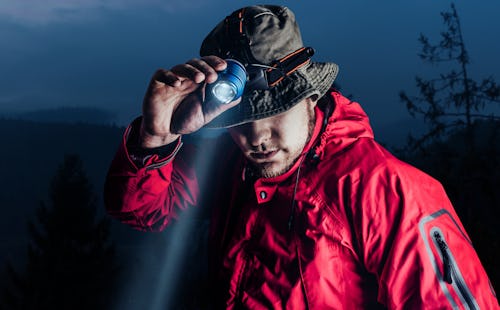
Headlamps are an important bit of gear for camping trips, whether you’re at a campsite or in the depths of the wild. Yes, we all have phones equipped with flashlights, but there are several reasons why this won’t cut it.
First, the battery life. Have you seen how quickly your phone charge runs down in extreme temperatures, or at altitude? You don’t want to exacerbate this, or risk being without light because your phone has run out of juice. Second, the joy of a headlamp is that it’s hands-free. Hitting the trail in the dark to catch the sunrise from the best viewpoint? Cooking dinner (like instant noodles) after dark? Or simply just trying to go to the toilet in the middle of the night without tripping over your guy lines? It’s all a whole lot easier with a hands-free headlamp than a regular flashlight.
Although vital for any adventure, I particularly value headlamps when I’m doing winter campouts, where the days are short and the nights long. Without one, you’re pretty restricted. Do you want USB-charged or battery-powered? How many lumens should you go for? Do you need the red setting? I’m here to answer all these questions.
What are lumens and is this even important?
Lumens are the amount of light that a source emits. More lumens equals more brightness. For regular camping, 100-150 lumens is sufficient, but if you’re scrambling, climbing, or following a poorly-marked, rough trail in the dark, I’d recommend going for 300 lumens as a minimum. If you’re staying at a campsite, you might be able to get away with as low as 30 lumens.
Simple? You’d think, but beam distance is just as important. Beam distance tells you how far a headlamp projects light. High lumens mean nothing if the beam distance is only a few feet. So keep that in mind when you're shopping for a headlight.
Should I go for USB-chargeable or battery-powered?
There are advantages to both. Battery-powered headlamps tend to have longer battery life. However, when they run out you’ll need batteries to replace them. To avoid being caught in this situation, you’ll probably travel with spare batteries, which equals more weight. Ultra lightweight backpackers tend to favor USB-charged headlamps, but the battery life is often shorter. (You can always carry a portable battery pack to charge it up, though.)
What else do I need to know?
Go for a headlamp with a red light setting. You’ll avoid blinding fellow campers, or waking them up when you’re ferreting for something in your backpack in the middle of the night. The softer red light setting is also much more economical for battery life.
Consider whether you need your headlamp to be water-resistant or waterproof. I’d recommend water-resistant as a minimum for all adventures (you never know when a downpour will hit), but if you’re doing watersports at night (e.g. sailing or kayaking), you’ll want a fully waterproof headlamp.
Ready to choose? Here are my picks for the eight best headlamps for camping.
Input may receive a portion of sales if you purchase a product through a link in this article. We only include products that have been independently selected by Input's editorial team.
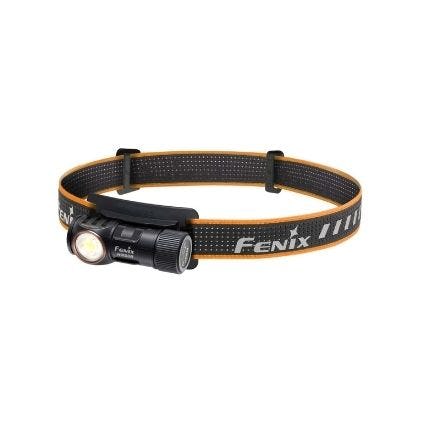
Every base has been covered with the Fenix HM50R. With 700 lumens and a beam length of 377 feet, there are very few adventures that this headlamp wouldn’t suit. On the low setting, the rechargeable battery lasts for up to 42 hours (and charges in 1.5 hours). There’s also a battery life indicator, so there’s no chance that you’ll run out of charge unexpectedly in the wild. It comes with six different settings (including red light), is drop-proof to six feet, and weighs just 2.75 ounces. The light is also easily detachable from the headset.
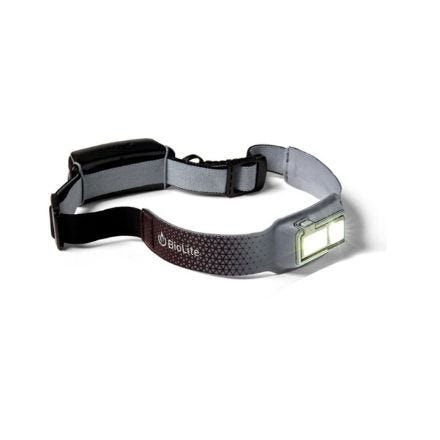
With a flood beam, spot beam, and a tilt on the front panel to easily direct the light, the BioLite HeadLamp is fantastic for precision. With 300 lumens and a beam distance of 246 feet, it’s suitable for the darkest of nights and rocky trails, and on the lowest setting, the rechargeable battery lasts up to 40 hours. It’s a particularly good choice for nighttime trail running.
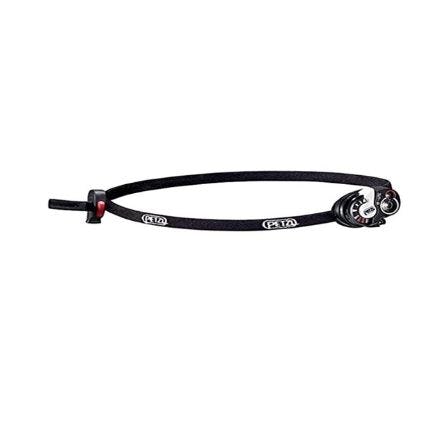
At 30 lumens, the Petzl e+LITE Headlamp isn’t the most powerful headlamp on the market, but it’s one of the lightest, weighing just one ounce. The battery lasts up to 95 hours and there’s a lock setting so you won't accidentally activate your headlamp and run down the charge. It includes an integrated whistle and is proven to withstand extreme temperatures. It’s battery-powered (batteries included).
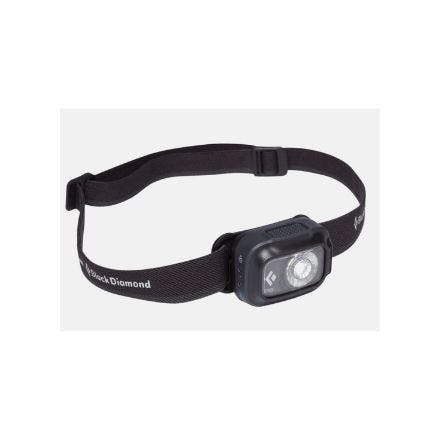
A great all-rounder, the Black Diamond Sprint 225 has a lockout feature to avoid draining the charge (it’s rechargeable), an LED battery life meter, and gives 225 lumens with 137 feet of beam distance. It’s storm-proof (fantastic for wetter, wilder nights) and there’s a brightness memory setting, so once you’ve decided the level of brightness that you like, this headlamp will remember and store that for next time.
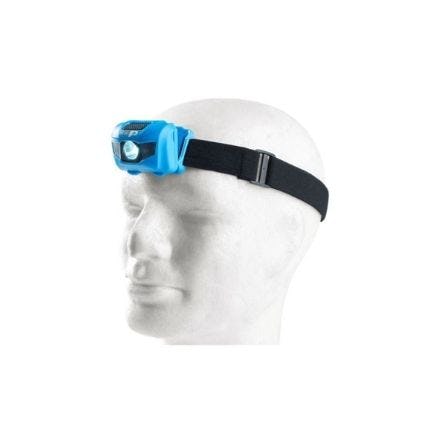
With 87 lumens, the 1000 Mile Headtorch still provides 190 feet of beam distance, which is ample for pottering around a campsite at night. It’s battery-powered (3 x AAA, sold separately), and will last for up to 20 hours on the dimmest setting. Whilst it’s water-resistant, it’s not waterproof, so don’t go swimming wearing this headlamp.
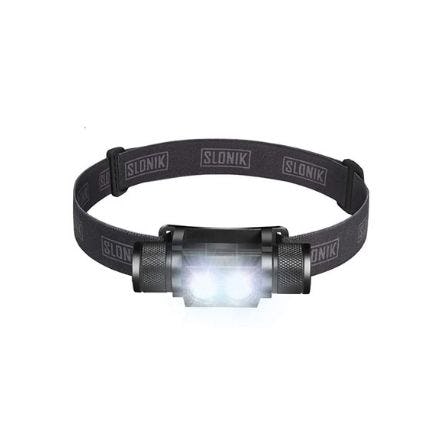
The SLONIK Rechargeable Headlamp is designed with construction workers in mind, and it shows. With a spotlight and broad lens, a beam distance of 600 feet, and a whopping 1,000 lumens, wearers can perform detailed tasks on the darkest of nights with no difficulty. It’s heavier than some (4.1 ounces) and includes a mount for attaching to a hard hat, so it’s great for adventures such as caving.
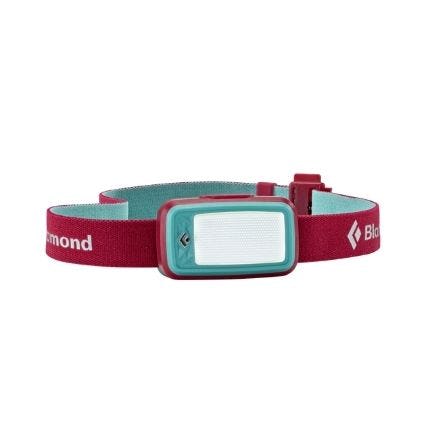
The Black Diamond Wiz Headlamp is battery-powered (2 x AAA). The 30-lumen output isn’t especially bright, but it still includes 160 feet of beam length. The Wiz weighs a mere 2 oz and automatically shuts down after two hours to prevent the battery from running down. The real winner: Rather than just having white and red light settings, this headlamp has a multitude of colors. It’s perfect for kids, festivals, or people who just want to jazz up their camping experience.
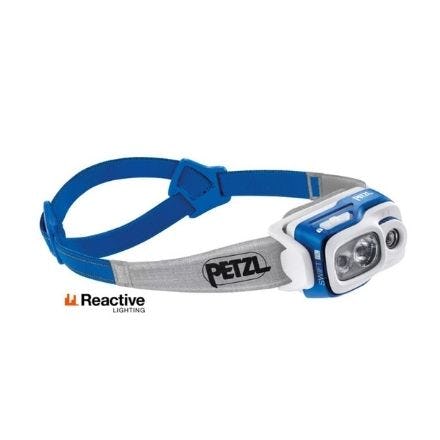
It’s far from cheap, but Petzl Swift RL Headlamp has incredible battery life, lasting for up to 100 hours on the lowest setting. It emits 900 lumens on the brightest setting, has spot and flood beam options, and has a lock function. It’s a little heavy at 3.5 ounces, but the ergonomic, adjustable headband ensures maximum comfort, making it a great choice for running.







